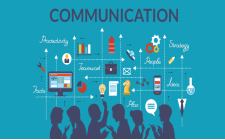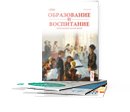The article focuses on the effects of current technologies including AI and digitalization on language. They are grouped in the domain that describes how the recent technological developments affect the words and phrases, grammar, and communication techniques used in todays’ society, while paying particular emphasis to the digital shift and social media. The positive and negative outcomes of all these changes for language are discussed, and the possible futures of the development of are considered.
Keywords: innovations, Artificial intelligence, technology, digital, language, terms, interaction, social media.
Introduction
Much has been written about new technologies as the latest means by which that reality has been transformed, with effects appearing in the different facets of the society including linguistic. New forms of communication have appeared as a result of the use of artificial intelligence, digitalization, and social networks, and instant messengers. These changes are not only the lexical ones but the syntactic and perceptive-semantic ones as well.

Earlier, language transformation occurred only through social, cultural, and historical factors. However, with new advances in technologies the change of language grows more rapid and is of a more technologically oriented process. Some of them are abbreviations, Internet slang and the use of emoji as some of the most common innovations. These changes can either enhance or reduce the culture of communication.
Research methods
This article was written with the help of two methods: content analysis and syntactic analysis. In the framework of the content analysis, the most used social networks including Twitter, Instagram[*], and Telegram, and the communication in forums and chats were taken into consideration. These sources also help to track changes and trends, new language usage and analyse different new forms of communication.
Syntactic analysis was to investigate shifts in grammatical structures as influenced by the new language varieties that include slang, abbreviations and emoji. Furthermore, the method of lexical analysis was employed in order to investigate shifts in the vocabulary as a result of the introduction of new terms and concepts, such as ‘neural networks’, ‘cloud technologies’ and ‘machine learning’.
Results
Another evident impact of new technologies is the introduction of new terms to the general use. For example, terms related to a sharp in technology like ‘cloud computing’, ‘mobile apps’, ‘machine learning’ are introduce in the daily language where it not only but popular among students and common users.
On the other hand, technologies are also responsible for the simplification of the language. For instance, abbreviations and acronyms, as well as emojis, which people use more often to save time and space for words are quite popular, and they do diminish the variety of the words available and the construction complicity. For instance, the convention of writing fully in language is replaced by the part of the language such as “lol”, “brb”, “omg” and the likes, while this makes the language easier it also restricts expression of details and limit complex ideas.
Social media also affect language in a very special way to the extent that it alters language. Sites like Twitter with characters per update limited to 280, forces the user to condense ideas into the smallest amount possible, thus increasing the use of things like abbreviations, memes and hashtags. Keywords are assumed to be grouped by hashtags, which also alters the structure of language.
Discussion
Internet slang and emoji constitute the most evident example of how technology affects the language people use. These elements are already rapidly becoming popular and are actively being incorporated into the flow of communication. Whereas in the past, they were used to depict emotions and accents in the messages, the emojis are now turning into the crucial component in making meanings and stating intensions.
Besides, currently, platforms like Instagram* and TikTok dictate language and ways of communication as such platforms favor creating short videos and memes. They are turning into the primary source of information transfer, which leads to the popularization of shortened phrases, which are already familiar to users.
One more interesting topic is how and in what extent artificial intelligence contributes in altering language. People interacting with objects like, Siri and Alexa develop new ways of chatting with technology other than writing, which demand simpler and normalized language input. As a result, there has been a development of new communication standards that are easily understandable.
There is also a general tendency to produce language for the purpose of interacting with AI, which is efficient for precise computational manipulations. Languages and interfaces used in various systems need to develop their own language, which can also be reflected in the language. For instance, terms such as neural networks and algorithms are becoming more popular in different fields.
Conclusion
New technologies also affect language in its structure, its words and how people communicate using it. Internet communication tools, SNS, IMC, and the appearance of artificial intelligence are emerging as the primary drivers of these changes. In the future, it is possible to make an assumption that this process will only develop and as a result new types of communication will appear which will correspond to the requirements of the new millennium. We expect the new languages to be developed as a result of new technologies; it will also be interesting to note how these languages perhaps more effective and efficient ones will be used to interface with the machines of the future.
References:
- Иванов, И. В. (2023). Цифровизация и её влияние на язык: новые горизонты. Издательство «Научный мир».
- Петрова, Н. В. (2022). Язык и технологии: от эмодзи до искусственного интеллекта. Журнал «Современная лингвистика», 3(2), 45–60.
- Сидоров, С. А. (2021). Социальные сети и язык: коммуникация в цифровую эпоху. Москва: Литературный институт.
- Михайлова, Е. П. (2022). Искусственный интеллект и язык: как технологии меняют общение. Журнал «Технологии и общество», 12–29.
[*]Instagram — продукт компании Meta, которая признана экстремистской организацией в России.







